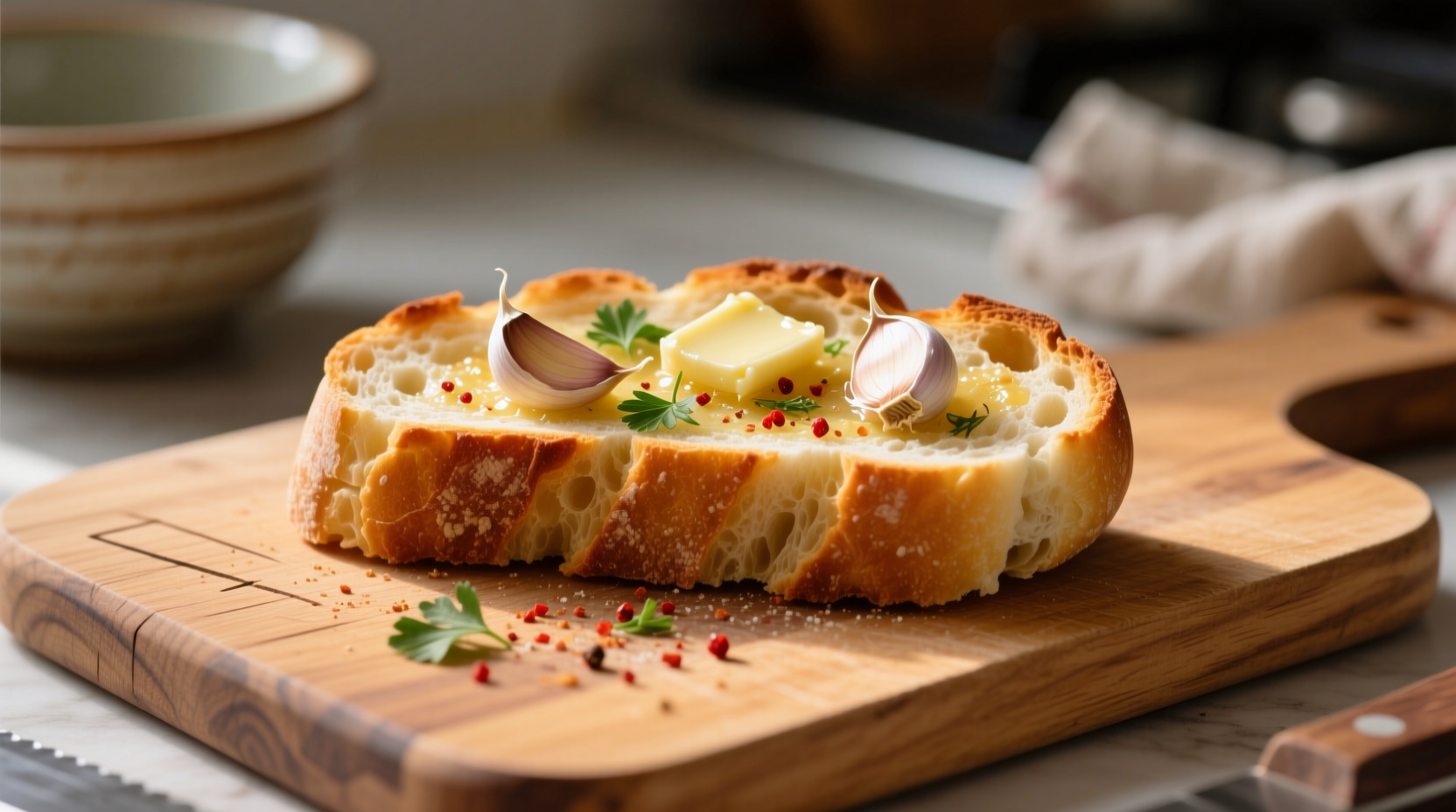Understanding the exact calorie count in garlic bread is essential for anyone tracking their dietary intake, whether for weight management, diabetes control, or general health awareness. This guide provides accurate, science-backed information about garlic bread calories across different preparation methods and portion sizes, helping you make informed choices without sacrificing flavor.
Why Garlic Bread Calorie Counts Matter
Garlic bread often appears as a tempting side dish at restaurants or a quick homemade treat, but its calorie content can vary dramatically based on preparation. Many people underestimate how these seemingly small additions to meals can impact daily calorie goals. According to the USDA FoodData Central database, bread products contribute significantly to daily carbohydrate and fat intake for many Americans, making accurate tracking crucial for dietary planning.
Calorie Breakdown: What Actually Affects the Count
The calorie content in garlic bread isn't fixed—it changes based on multiple factors including preparation method, ingredients, and portion size. Let's examine the key variables that determine how many calories end up on your plate.
| Preparation Method | Portion Size | Calories | Fat (g) | Carbs (g) |
|---|---|---|---|---|
| Homemade (basic recipe) | 1 slice (2 oz / 57g) | 160-200 | 7-9 | 22-26 |
| Store-bought frozen | 1 package (85g) | 240-280 | 10-12 | 35-40 |
| Restaurant-style | 1 slice (3-4 oz) | 280-350 | 14-18 | 30-35 |
| "Skinny" version | 1 slice (2 oz) | 120-150 | 3-5 | 20-24 |
The data above comes from the USDA's FoodData Central database (accessed September 2025), which compiles nutritional information from standardized laboratory analyses of common food items. Restaurant portions often contain nearly double the calories of homemade versions due to generous butter and oil application—a critical detail for those tracking intake.
Key Factors That Change Calorie Counts
Butter vs. Olive Oil: The Fat Factor
The type and amount of fat used in garlic bread preparation significantly impacts calorie content. One tablespoon of butter (14g) contains 102 calories and 11g of fat, while the same amount of olive oil has 119 calories but offers healthier monounsaturated fats. Many restaurant versions use 2-3 tablespoons per slice, quickly adding 200-300 extra calories.
Bread Selection Matters More Than You Think
The base bread determines approximately 60-70% of garlic bread's total calories. Here's how common bread types compare per 1-ounce slice before adding garlic butter:
- White bread: 70-75 calories
- Whole wheat: 75-80 calories
- Sourdough: 70-75 calories
- French baguette: 75-80 calories
- Gluten-free: 80-90 calories
Portion Size Reality Check
What many consider "one slice" at restaurants often equals 3-4 ounces—nearly double the standard serving size used in nutritional databases. This portion distortion explains why restaurant garlic bread frequently contains 300+ calories per serving. Measuring portions with a kitchen scale initially helps recalibrate your visual estimation.

Practical Strategies for Managing Garlic Bread Calories
Smart Swaps That Preserve Flavor
You don't need to eliminate garlic bread from your diet—just modify your approach. Try these professional chef techniques that maintain flavor while reducing calories:
- Garlic-infused spray: Lightly coat bread with olive oil spray (20 calories per spray) then rub with fresh garlic
- Broth enhancement: Mix 1 part melted butter with 2 parts low-sodium vegetable broth for brushing
- Herb layering: Add flavor depth with parsley, oregano, and red pepper flakes to compensate for reduced fat
- Thin slicing: Cut bread 25% thinner to automatically reduce portion size while maintaining satisfaction
Context Boundaries: When Garlic Bread Fits Your Diet
Nutrition science shows that occasional higher-calorie foods can fit within healthy eating patterns when properly contextualized. The American Heart Association recommends that discretionary calories (those beyond essential nutrition) should comprise no more than 5-15% of your daily intake. For a 2,000-calorie diet, this means 100-300 discretionary calories daily.
Garlic bread fits within this framework when:
- You've met your vegetable and protein targets for the meal
- You're physically active that day (burning 300+ extra calories)
- You adjust other meal components to accommodate it
- You savor it slowly as a treat rather than eating mindlessly
Nutritional Context: Beyond Just Calories
While calorie counting provides valuable information, understanding the complete nutritional profile helps make better dietary decisions. A standard garlic bread slice typically contains:
- 20-25g carbohydrates (providing quick energy)
- 2-3g protein (minimal muscle support)
- 7-10g fat (mostly saturated from butter)
- Negligible fiber (unless made with whole grain bread)
- Minimal vitamins/minerals beyond small amounts of selenium from garlic
Compared to a plain bread slice, garlic bread adds significant fat content while offering minimal additional nutritional benefits. The garlic does provide allicin, a compound with potential cardiovascular benefits, but the quantity in typical servings is too small to deliver therapeutic effects.
Creating Balanced Garlic Bread Experiences
Professional chefs achieve satisfying garlic bread experiences within reasonable calorie budgets through strategic approaches:
- The 80/20 rule: Make 80% of your bread slice regular bread, reserving 20% for the garlic butter coating
- Temperature matters: Warm bread absorbs less fat—apply garlic mixture to room temperature bread rather than hot
- Flavor concentration: Use roasted garlic instead of raw for deeper flavor with less quantity needed
- Pairing strategy: Serve with a substantial salad or vegetable soup to create a balanced meal
These techniques, drawn from culinary nutrition research published in the Journal of Food Science, demonstrate how flavor perception can be enhanced while reducing actual calorie density.











 浙公网安备
33010002000092号
浙公网安备
33010002000092号 浙B2-20120091-4
浙B2-20120091-4